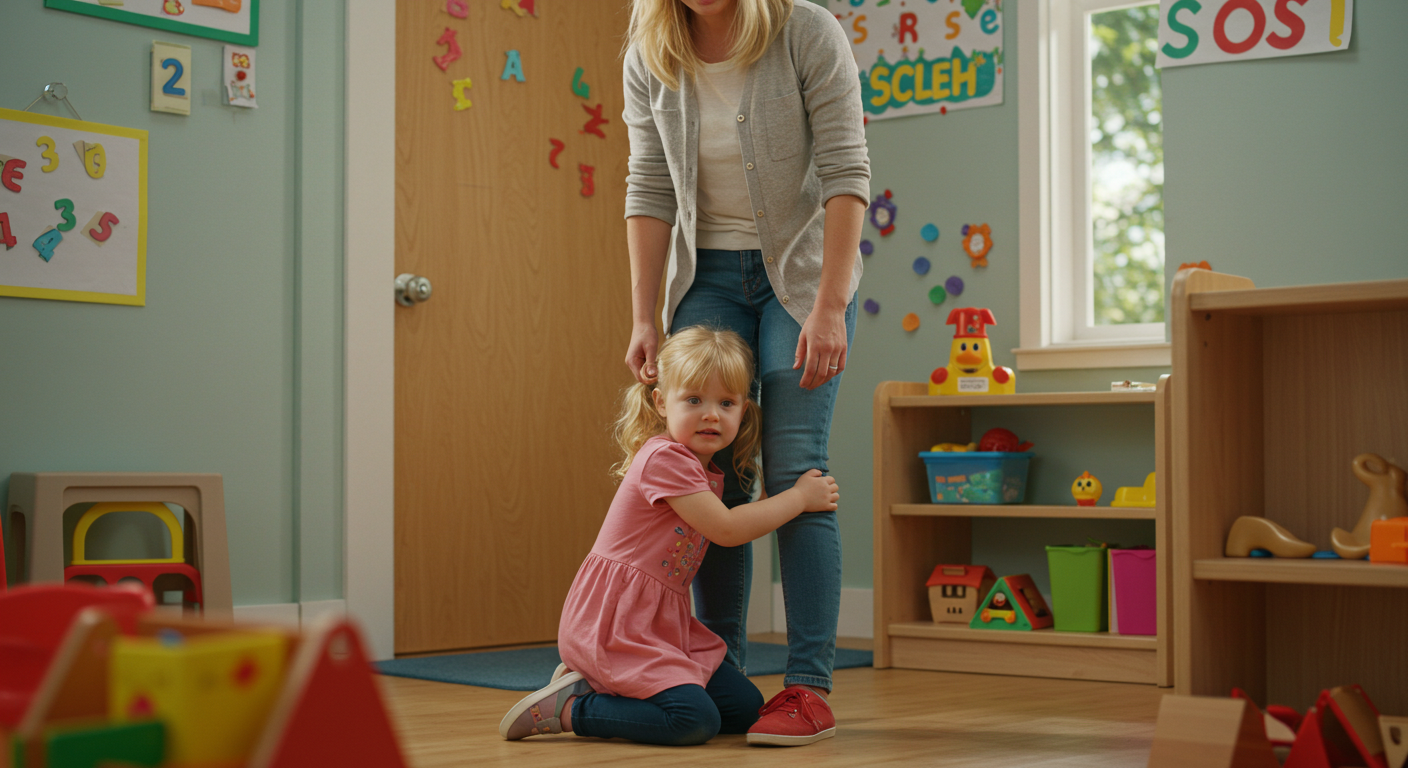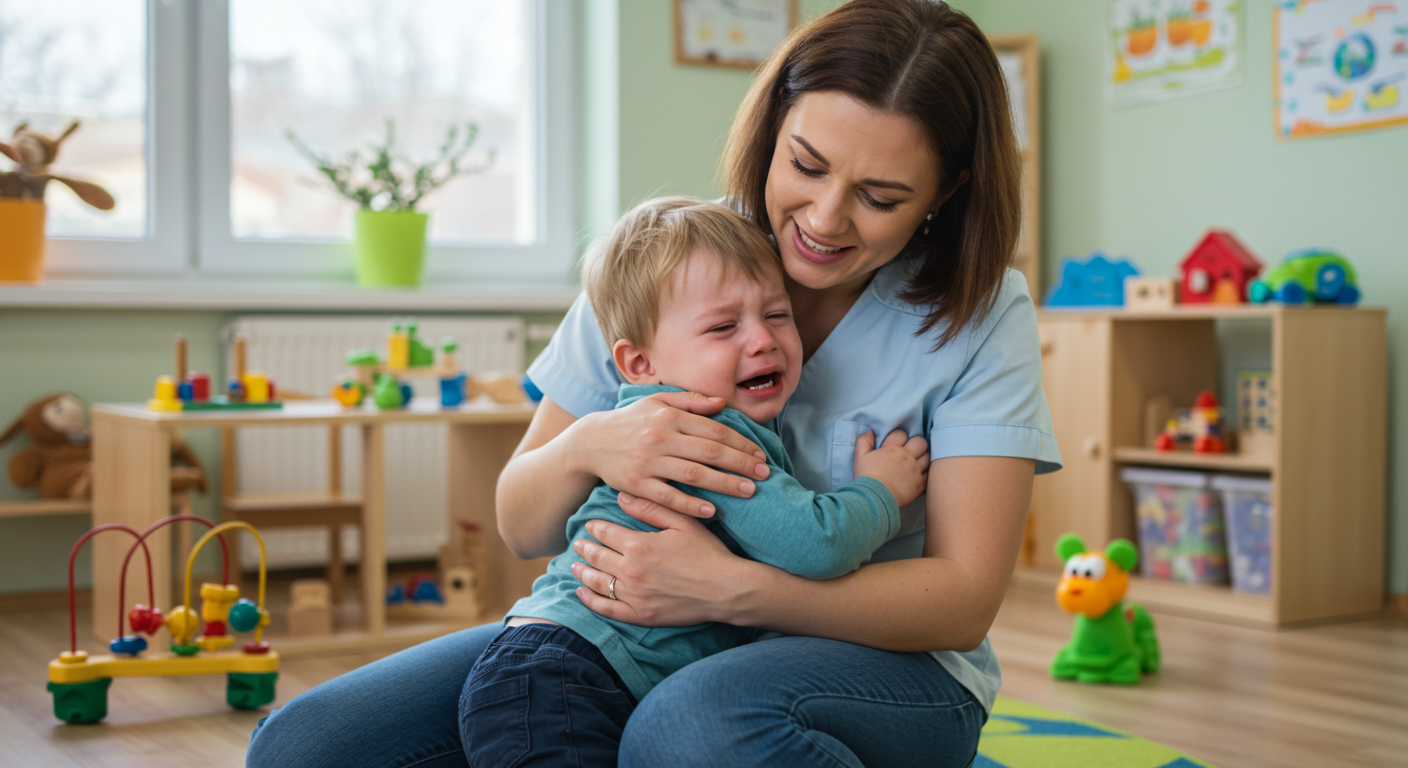DSM V Separation Anxiety Disorder

Separation Anxiety Disorder (SAD), as defined in the Diagnostic and Statistical Manual of Mental Disorders, Fifth Edition (DSM-5), is a mental health condition characterized by excessive fear or anxiety concerning separation from those to whom the individual is attached. While it is commonly associated with childhood, the DSM V acknowledges that separation anxiety can also occur in adolescents and adults. Understanding the signs, symptoms, and treatment options for DSM V Separation Anxiety Disorder is crucial for early intervention and effective management.
What is DSM V Separation Anxiety Disorder?
In the DSM V, Separation Anxiety Disorder is classified under Anxiety Disorders, reflecting its root in excessive and developmentally inappropriate fear of being apart from major attachment figures, such as parents or caregivers. This condition goes beyond the normal developmental phase of childhood separation anxiety and becomes pathological when it is intense, persists over time, and interferes with daily functioning. It is important to keep in mind that most kids do go through a normal developmental phase showing symptoms of this, but that does not mean they have the disorder.
All three of my children at some point showed distress when we would leave. I also recall being a nanny for a 9 month old girl that would cry and cry when the parents would leave during the first week I started watching her. This is normal. However, if it continues beyond an extended period of time, then it may be worth reaching out to a pediatrician to see if something else is going on. Being that I was already in school for applied behavior analysis, I used the principles of behavior to come up with my own interventions that I used for the little girl and my own 3 children that I've included below. With that being said, they were not specifically diagnosed with the disorder, but simply showed separation anxiety as part of the normal developmental phase, so they may or may not work with someone that has an actual diagnosis.
The DSM V expanded the diagnostic criteria to include adults, recognizing that separation anxiety does not always resolve with age and may manifest later in life or continue from childhood into adulthood.
DSM V Diagnostic Criteria
According to the DSM V, the essential feature of Separation Anxiety Disorder is developmentally inappropriate and excessive fear or anxiety concerning separation from those to whom the individual is attached, as evidenced by at least three of the following symptoms:
- Recurrent excessive distress when anticipating or experiencing separation from home or major attachment figures.
- Persistent and excessive worry about losing major attachment figures or possible harm to them.
- Persistent and excessive worry about experiencing an untoward event (e.g., getting lost, being kidnapped) that causes separation.
- Reluctance or refusal to go out, away from home, to school, to work, or elsewhere because of fear of separation.
- Excessive fear or reluctance about being alone or without major attachment figures at home or in other settings.
- Refusal to sleep away from home or to go to sleep without being near a major attachment figure.
- Repeated nightmares involving the theme of separation.
- Repeated complaints of physical symptoms (such as headaches, stomachaches, nausea) when separation occurs or is anticipated.
To meet the diagnosis, the disturbance must last at least four weeks in children and adolescents and six months or more in adults, and it must cause clinically significant distress or impairment in social, academic, occupational, or other important areas of functioning.
Signs and Symptoms

The signs and symptoms of DSM V Separation Anxiety Disorder can vary with age but typically include:
In Children:
- Frequent crying or tantrums when separated from parents
- Clinging behavior
- Refusal to go to school or sleepovers
- Complaints of physical ailments before separation
- Difficulty sleeping alone
- Fear of harm coming to loved ones
In Adolescents:
- Persistent worry about loved ones’ safety
- Avoidance of travel, work, or social activities that involve separation
- Panic attacks or anxiety symptoms when separated
- Difficulty maintaining independence or starting new relationships
- Frequent communication (calls, texts) to check on loved ones
- Depression or withdrawal when separated
These symptoms can lead to significant impairments in daily functioning, including poor academic or occupational performance and strained relationships.
Causes and Risk Factors
The development of DSM V Separation Anxiety Disorder is influenced by a combination of biological, environmental, and psychological factors:
- Genetic predisposition: A family history of anxiety disorders may increase risk.
- Temperament: Children with a naturally shy or inhibited temperament are more prone.
- Attachment style: Insecure attachment or overprotective parenting may contribute.
- Life stressors: Events such as divorce, moving, loss of a loved one, or trauma can trigger onset.
- Parental mental health: Children of parents with anxiety or mood disorders may be more vulnerable.
Treatment of DSM V Separation Anxiety Disorder
The good news is that Separation Anxiety Disorder is treatable. Effective treatment plans typically involve a combination of psychotherapy, family involvement, and sometimes medication.
1. Cognitive Behavioral Therapy (CBT)
CBT is the most evidence-based treatment for Separation Anxiety Disorder. It helps individuals:
- Identify and challenge irrational fears related to separation
- Learn coping strategies for anxiety (e.g., relaxation techniques, breathing exercises)
- Gradually face feared situations through exposure therapy
- Restructure negative thought patterns and build confidence
For children, CBT often includes play therapy or art therapy to help them express emotions and process experiences in a developmentally appropriate way.
2. Family Therapy
Because attachment and separation occur within the family system, family therapy is often beneficial. This includes:
- Educating parents about the disorder
- Teaching effective responses to anxiety symptoms
- Supporting healthy independence and boundaries
- Reducing overprotectiveness or enabling behaviors
3. School-Based Interventions
For children and adolescents, collaboration with school personnel is essential. Teachers and counselors can help monitor symptoms, provide reassurance, and implement gradual exposure to school settings if school refusal is present.
4. Medication
Although medication is not the first-line treatment, it may be used in moderate to severe cases, particularly when psychotherapy alone is insufficient. Commonly prescribed medications include:
- Selective Serotonin Reuptake Inhibitors (SSRIs) such as fluoxetine (Prozac) or sertraline (Zoloft)
- Anti-anxiety medications, used cautiously and usually short-term
Medication should always be administered under the guidance of a psychiatrist and typically alongside psychotherapy.
5. Lifestyle and Support
- Consistent routines can help reduce anxiety
- Adequate sleep, nutrition, and physical activity support emotional regulation
- Mindfulness and relaxation practices may help manage stress
- Support groups for individuals or parents can provide shared experiences and coping tips
6. Graduated Extinction for crying in young children:
This is the intervention I found to be successful with younger children when they are first learning to separate from mom and dad. it does require some preplanning for the parents and child caregiver to work on it prior to fully leaving a child. Essentially, you start with the babysitter or caregiver you will be leaving your child with. You go through a routine to say goodbye and go into another room. Then you can either do a non-contingent timed method or contingent method for being calm.
- Time Based Non-contingent for Crying
This method starts with doing a good-bye routine, then leaving for 2 minutes and coming back. Reassuring the child and then going through the good-bye process again, but this time going to another room for 5 minutes, then 10 minutes, then 15 minutes and so on increasing the time gradually. With this method you return whether the child is crying or not. Each time reassuring the child, giving them hugs, kisses etc. Then saying you have to leave again and going through the good-bye process each time. It may seem like you are just continuing to restart their crying however, by leaving and coming back in this way you are helping them to understand that when you leave, you do come back. It also gives the opportunity to do multiple good byes so that they can experience the separation over and over as a way to desensitize them to the separation.
- Contingent method for being calm
Another form of this method would be to say good bye and leave until they are calm. As soon as the child calms down, return to the room to give praise and attention. Hugs and kisses then repeat saying good bye again and do the process over again. Do this as many times as you are able until you can leave the room without them crying at all. This requires that the caregiver you leave the child with to be as creative as possible in getting the child to stop crying, so that there is some calm behavior the parent can immediately return during. The caregiver may hold the child to show them cool things outside a window, spin them around if they like that, get out special toys they've never seen before that they really like, etc.
I highly recommend having a routine for saying good-bye to your child, but that the child stays inside a building for the good-bye. It's hard to have them running after a car when you are leaving. Having them do a final wave good-bye through a house window is a great way to end a good-bye routine. My son had some anxiety when I would leave him with our nanny when he was 2-3 years old and this routine was important for him. I recall one time forgetting to wave as I drove away and that apparently led to a huge meltdown, so the good-bye routine is extremely important!
7. Video Modeling:
Video Modeling can be another powerful way to help kids understand what's going to happen when parents go somewhere and you are leaving them. Especially if you have a child with autism that you are taking to therapy, it can be helpful to use an animated social story to help them understand the parent will be coming back to get them. The following is an animated social story video on YouTube about parents leaving and dealing with separation anxiety...
Things to Consider:
If your child didn't used to have issues with being left and suddenly are showing signs of separation anxiety and distress, you may need to consider what is going on in that location or with that individual you are leaving them with. It's possible a caregiver is not treating the child the way you would like them to. My husband and I had to learn this the hard way with a few of our nannies. We ended up installing cameras in the home and found them not doing what we would like them to when supposedly caring for our kids. Most of the issues revolved around simply ignoring our kids while they watched TV, but some were worse with yelling or scolding our kids too harshly. I could write a book about all the nannies we had over the years! However, when we found the right caregiver for our kids, that would play with them and really cared about them, we had no more issues with separation anxiety. So, it's not always the child's fault that they are getting upset when you leave, it could just be that particular caregiver.
Prognosis

If your child truly has DSM V separation anxiety disorder, with early diagnosis and comprehensive treatment, the prognosis is generally positive. Many individuals experience significant reduction in symptoms, improved functioning, and better quality of life. However, if left untreated, the condition can increase the risk of developing other anxiety disorders, depression, and substance abuse in later life.
Conclusion
DSM V Separation Anxiety Disorder is a serious but treatable mental health condition that affects both children and adults. Recognizing the signs and seeking timely intervention—especially through evidence-based treatments like CBT and family therapy—can lead to meaningful improvements. If you or a loved one is experiencing persistent anxiety about separation, reaching out to a mental health professional is a crucial first step on the path to recovery.
If you haven't already, be sure to check out my ebooks, now on Amazon!

